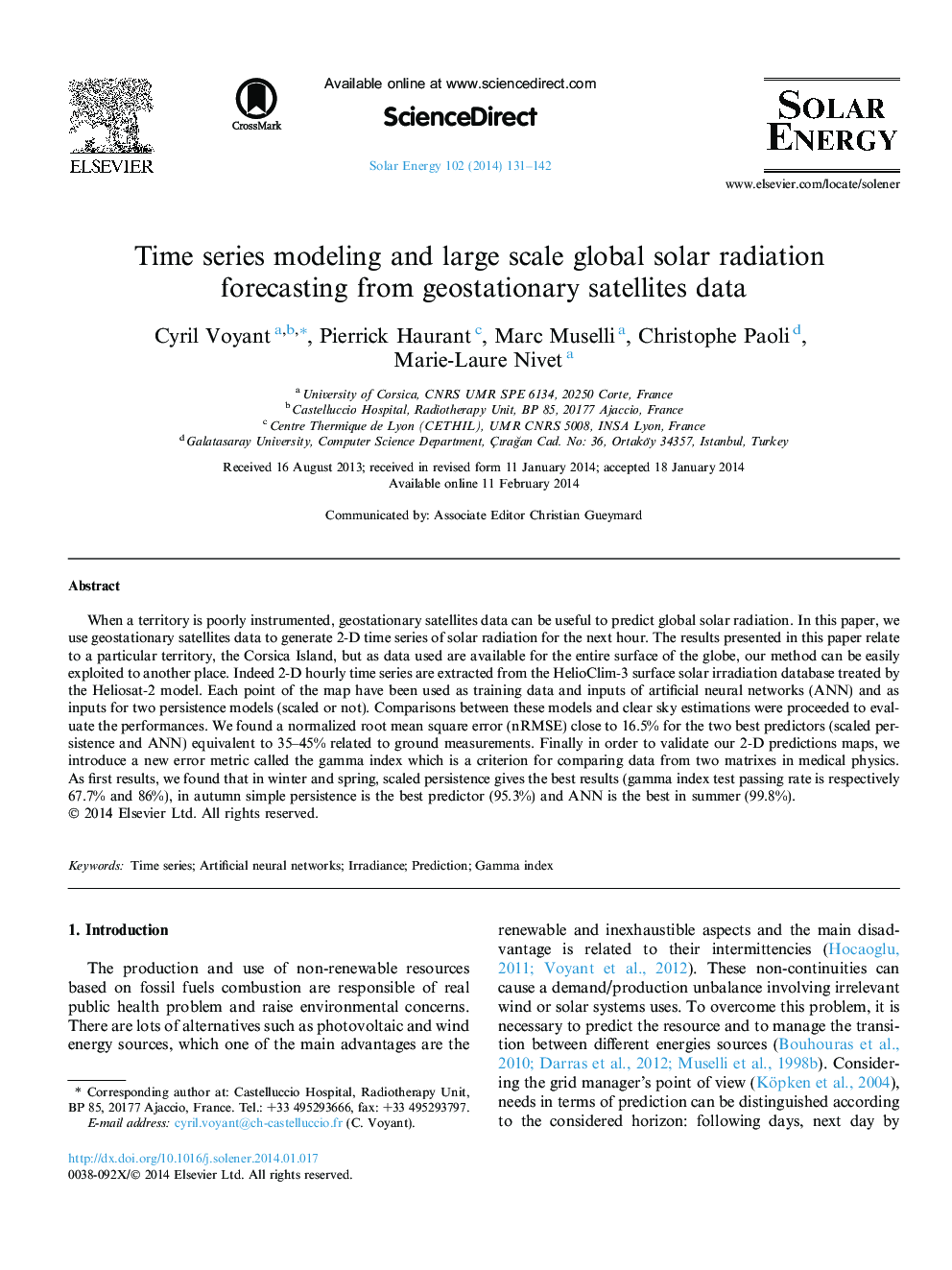| کد مقاله | کد نشریه | سال انتشار | مقاله انگلیسی | نسخه تمام متن |
|---|---|---|---|---|
| 1550137 | 1513116 | 2014 | 12 صفحه PDF | دانلود رایگان |
• Global radiation prediction using satellites data and time series analysis.
• Optimized artificial neural networks using the mutual information.
• New tool of solar radiation maps comparison related to “the distance to agreement” are exposed: the gamma index.
When a territory is poorly instrumented, geostationary satellites data can be useful to predict global solar radiation. In this paper, we use geostationary satellites data to generate 2-D time series of solar radiation for the next hour. The results presented in this paper relate to a particular territory, the Corsica Island, but as data used are available for the entire surface of the globe, our method can be easily exploited to another place. Indeed 2-D hourly time series are extracted from the HelioClim-3 surface solar irradiation database treated by the Heliosat-2 model. Each point of the map have been used as training data and inputs of artificial neural networks (ANN) and as inputs for two persistence models (scaled or not). Comparisons between these models and clear sky estimations were proceeded to evaluate the performances. We found a normalized root mean square error (nRMSE) close to 16.5% for the two best predictors (scaled persistence and ANN) equivalent to 35–45% related to ground measurements. Finally in order to validate our 2-D predictions maps, we introduce a new error metric called the gamma index which is a criterion for comparing data from two matrixes in medical physics. As first results, we found that in winter and spring, scaled persistence gives the best results (gamma index test passing rate is respectively 67.7% and 86%), in autumn simple persistence is the best predictor (95.3%) and ANN is the best in summer (99.8%).
Journal: Solar Energy - Volume 102, April 2014, Pages 131–142
